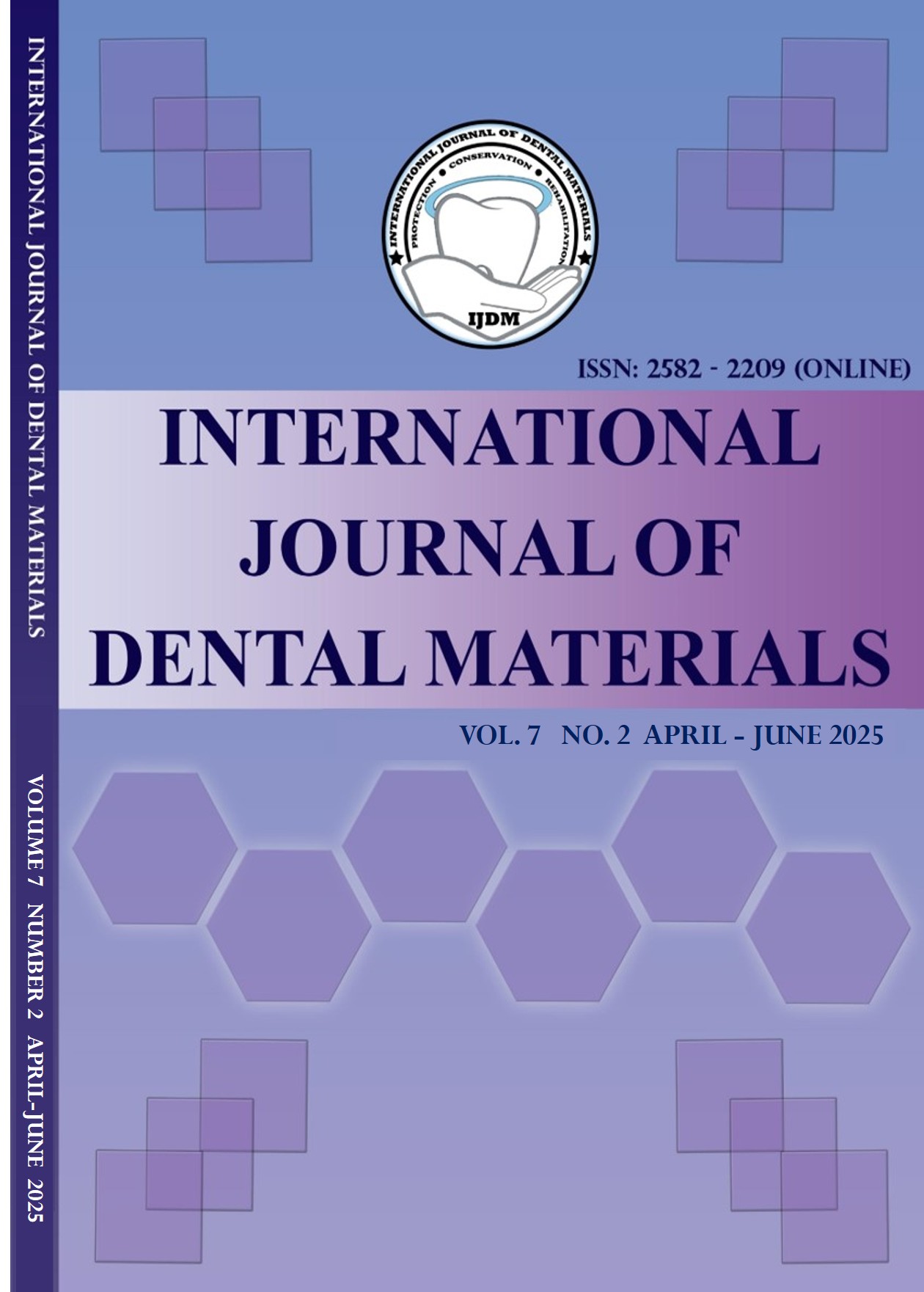Effect of Recasting Nickel-Chromium Alloy on Surface Roughness: An in vitro Study
Main Article Content
Abstract
Background: Dental casting alloys play a crucial role in the restoration of partial dentition. Among these, Nickel-Chromium (Ni-Cr) alloys are widely used due to their ease of availability, low cost and favourable physical properties. Incorporating at least 50% new alloy into recast Ni-Cr alloy does not significantly alter the mechanical properties of porcelain-fused-to-metal restorations. From both environmental and economic perspectives, recycling dental alloys is a highly beneficial practice.
Aim: To study the influence of recasting Nickel-chromium base metal alloy on surface roughness.
Materials and Methods: A total of 120 wax patterns (10 × 6 × 1 mm) were prepared using modelling wax and invested with phosphate bonded investment material. After setting, they were subjected to burnout to eliminate wax. A Nickel-Chromium (Ni-Cr) alloy was melted using a torch flame as per manufacturer instructions and cast using a centrifugal casting machine. Castings were bench-cooled, divested, and cleaned. Sprues were removed with high-speed cutting discs, and residual investment was eliminated by sandblasting with 250-μm aluminum oxide for five minutes at a 50 mm distance, followed by ultrasonic cleaning in distilled water. Specimens were divided into six groups (n = 20 each): Group 1 used 100% new alloy, while Groups 2–6 were sequentially cast with 50% new alloy and 50% reused alloy from the preceding group. The surface roughness (Ra) of each specimen was measured using a surface roughness tester, and values were recorded in micrometres (μm). The obtained data was subjected to one-way ANOVA.
Results: Recasting of the alloy showed an increased surface roughness from groups 1 to 6. One-way ANOVA displayed a significant difference among the groups.
Conclusion: Reusing the Ni-Cr alloy resulted in a progressive increase in surface roughness. With each cycle of reuse, a statistically significant rise in the average surface roughness (Ra) was observed.
Article Details
Section

This work is licensed under a Creative Commons Attribution 4.0 International License.
This work is licensed under a Creative Commons Attribution 4.0 International License.

